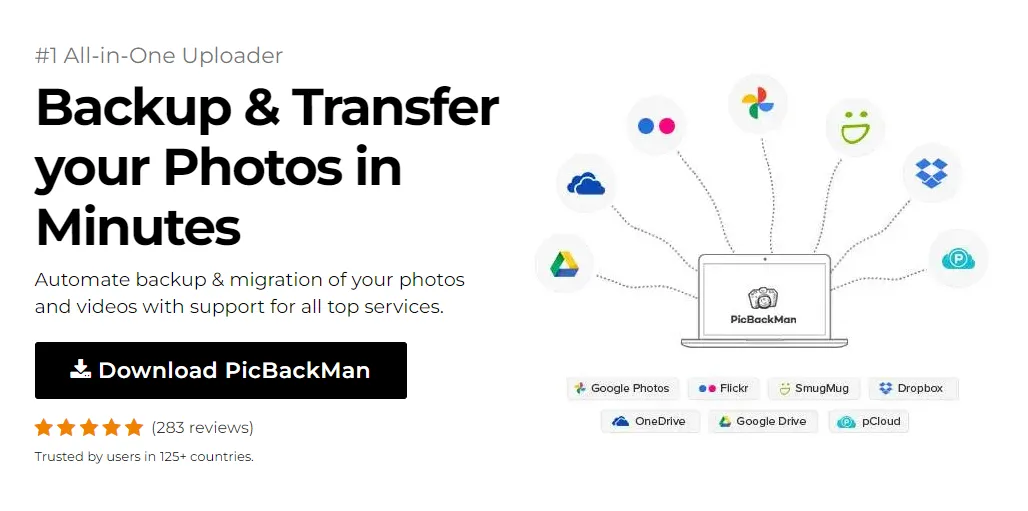
How to Delete Files from OneDrive but Not PC


Wondering how to delete files from Microsoft OneDrive cloud storage but keep files on your PC? This guide covers techniques for removing OneDrive content while avoiding deleting local files.
Introduction to Managing OneDrive Storage
Microsoft OneDrive gives users free cloud storage space to remotely access files across devices. Sometimes, cleaning out trivial OneDrive files can improve organization and free up capacity. The key is knowing how to selectively delete cloud content without disturbing your computer's local storage.
Understanding Separate Cloud vs Local Storage
OneDrive and computer drives operate as separate storage systems. Deleting from one does not directly affect the other. However, they can become synced, so caution is needed when removing cloud files. With the right steps, users can cleanly delete OneDrive content while retaining all local PC folders and files.
Why Delete OneDrive Files?
Reasons for removing OneDrive files include:
- Free up capacity when nearing the storage limit
- Improve organization by removing unnecessary legacy files
- Ensure privacy by deleting files containing sensitive data
- Reduce syncing time by removing bulky folders that do not need backup
Cleaning outdated or trivial files from OneDrive maintains ordered cloud storage without bloating the capacity.
Locating OneDrive Files for Deletion
Before deleting, first navigate OneDrive storage and identify files to remove. Be cautious of removing content also stored locally.
Accessing OneDrive Folders and Content
Log into OneDrive through the web browser interface or desktop app. Browse all top-level folders and open to scan contents. Recently opened files also display for quick access.
Alternatively, use the search bar to locate files by name across all OneDrive folders. Search is useful for finding specific files when folder structure is unclear.
Techniques to Select OneDrive Files for Removal
What criteria should determine which OneDrive files to delete?
- File age - Remove very old unused files lingering in OneDrive
- Size - Delete large files consuming excess storage capacity
- Sensitivity - Remove files containing private personal or financial data
- Relevance - Delete files that no longer serve any purpose or value
Also consider the local sync status when selecting OneDrive files for removal.
Techniques for Deleting OneDrive-Only Files
With target files identified, next comes actually deleting content while retaining local PC files. This requires caution to prevent accidentally removing synced local data.
Using OneDrive Delete vs Recycle Bin Functions
Within OneDrive, right-click any file or folder and select Delete to permanently erase content from cloud storage. Be wary doing this to synced content also on the PC.
Alternatively, choose Remove to send content to the OneDrive Recycle Bin instead of permanent deletion. This provides a safety net allowing recovery if accidentally deleted.
Double Checking Local Sync Status
Before confirming OneDrive deletion, re-check it is not synced to local drives, including Desktop, Documents, Pictures folders. You want to delete cloud-only content without impacting the PC files.
One way is right-clicking the file >> Properties >> View synchronization status. If shown as "Always keep on this device" then it is set to sync locally and delete with caution.
Restoring Accidentally Deleted OneDrive Files
Mistakes happen. What if you delete OneDrive files still needed? Options exist to recover that content in some cases.
Leveraging OneDrive File History and Versioning
OneDrive retains file history and versions allowing rollback of content to earlier saved states. Right-click the folder or file >> Version history. Scroll through earlier iterations and restore if accidentally deleted.
Version history lifespans vary based on OneDrive subscription level. Free/basic only stores for 30 days while premium extends version history up to 10 years.
Recovering Deleted Files from OneDrive Recycle Bin
If sent to Recycle Bin instead of permanent delete, OneDrive retains files there for 93 days. Open Recycle Bin from the OneDrive sidebar and restore as needed. This provides a generous window to reclaim accidentally deleted files.
Contacting OneDrive Support for File Recovery Assistance
For critical irreplaceable files, consider contacting OneDrive support for recovery assistance even if past the normal restore period. Support options are available via online chat or phone during business hours. In some limited cases, they can help recover deleted data.
Optimizing OneDrive Cloud Storage
In addition to removing unneeded files, also consider optimizing OneDrive storage usage for improved organization.
Upgrading Limited OneDrive Storage Capacity
All users receive 5GB starter OneDrive storage free. When exceeding capacity, upload speed throttles severely impacting usability. Instead of constantly deleting files piecemeal when full, consider upgrading to 50GB-1TB+ expanded storage tiers based on needs and budget. Less deletion maintenance is needed.
Backup & Transfer your Photos in Minutes
Trusted by users in 125+ countries.
Best Practices for Organizing OneDrive Storage
Employ organization strategies optimizing OneDrive file operations:
- Consolidate separate folders into centralized clearly labeled folder structure
- Favor descriptive folder and file naming standards over generic names like "Document1"
- Remove duplicate redundant draft file versions lingering in OneDrive
- Sync selective key folders to PC instead of entire OneDrive contents
Alternative Cloud Storage Providers
If needing expanded capacity beyond OneDrive offerings or dissatisfied with Microsoft's platform, alternatives exist:
Google Drive
Google Drive ties into the overall Google ecosystem with apps like Docs and Gmail. Generous 15GB free storage and powerful search makes it easy to manage files.
Dropbox
Dropbox pioneered the cloud storage concept. It remains a leader focused specifically on storage and sync. Easy file sharing and strong security features.
Apple iCloud
Well-integrated with Apple devices and apps. Seamless user experience for iPhone/iPad users backing up photos or notes. But less storage than competitors.
Amazon Drive
Amazon's storage solution strategically ties into other Prime subscription benefits. Large 100GB base capacity. Light on collaborative tools compared to dedicated platforms.
Each cloud storage platform takes a slightly different approach but solves the central problem of keeping files backed up and accessible across devices. Consider alternate solutions like these if hitting OneDrive limitations.
Quick Tip to ensure your videos never go missing
Videos are precious memories and all of us never want to ever lose them to hard disk crashes or missing drives. PicBackMan is the easiest and simplest way to keep your videos safely backed up in one or more online accounts. Simply Download PicBackMan (it's free!), register your account, connect to your online store and tell PicBackMan where your videos are - PicBackMan does the rest, automatically. It bulk uploads all videos and keeps looking for new ones and uploads those too. You don't have to ever touch it.
FAQs About Managing OneDrive Storage
Can I fully delete the OneDrive app and service?
Yes, OneDrive can be completely uninstalled from Windows devices within Settings or via the Control Panel. This erase all local OneDrive folders and synchronization. Back up any cloud files elsewhere before uninstalling OneDrive entirely.
What happens if I delete OneDrive files also saved locally?
Use extreme caution before deleting OneDrive files showing as synced locally under Properties. Doing so can delete PC folder content including Desktop, Documents, Pictures and more. First undo synchronization to safely delete cloud-only files.
Final Tips for Cleaning Up OneDrive
Save Time by Selecting Multiple Files
In OneDrive browser view, CTRL+Click to multi-select files before deleting in one batch action. This allows quickly clearing large swaths of unnecessary content. Just be certain local folders remain untouched.
Set Reminders to Regularly Clean House
Don't let trivial content accumulate again after deleting. Schedule recurring calendar reminders to revisit OneDrive and clean out unused files every month or quarter. Consistent maintenance prevents storage bloat.
Be Selective When Choosing Local Sync Folders
A core advantage of OneDrive is device syncing for access to critical files locally across PCs and phones. But uncontrolled sync can duplicate huge folders better left cloud-only. Carefully consider which folders truly need local backup instead of blanket sync.
In Summary
OneDrive cloud storage manages valuable remote access to files across devices. When storage capacity fills, it becomes necessary to remove obsolete, redundant
Backup & Transfer your Photos in Minutes
Automate backup & migration of your photos & videos with support for all top services.
Trusted by users in 125+ countries.










